Over the past week I’ve photographed some of my collages and put them on website for sale. Here are a few of them:
Over the past week I’ve photographed some of my collages and put them on website for sale. Here are a few of them:
My friend Suzanne showed me an artist’s book called Fallen Books the other day. According to the artists, Melissa Dubbin and Aaron S. Davidson:
Books are earthquake proof. Fallen Books is a book project that brings together images of toppled books housed in seismically active libraries. The photographs, often taken by librarians, are laid out as a chronological index of libraries in the aftermath of an earthquake and include earthquake names, locations, dates and the relative intensity of the earthquake as measured by the Modified Mercalli Scale.
Here’s one of the pictures…
I suppose since I experienced some rather large earthquakes first-hand when I lived in California, the book had a particular appeal to me. In the 1989 earthquake, everything on the shelves in the corner market around the block from my house fell onto the floor; it looked rather like that picture above. I was especially drawn to the back of the book, with a color coded display of the Modified Mercalli Scale. Here’s some examples:
II. Feeble: Felt only by a few persons at rest, especially on upper floors of buildings. Delicately suspended objects may swing.
V. Rather Strong: Felt by nearly everyone; many awakened. Some dishes and windows broken. Unstable objects overturned. Clocks may stop.
The USGS website lists the worst as
XII. Damage total. Lines of sight and level are distorted. Objects thrown into the air.
See more of Melissa Dubbin and Aaron S. Davidson’s work here.
Yesterday I finished printing my 2015 calendar. The next step is to collate, trim and stuff the plastic cases. Hopefully on Friday. Here’s a quick picture of all the months—after I’ve got them all assembled, the last step will be to take pictures for my website. February is bit hard to see, as it’s on black paper with silver ink (the haiku is “Full moon—an owl calls across the silence”)
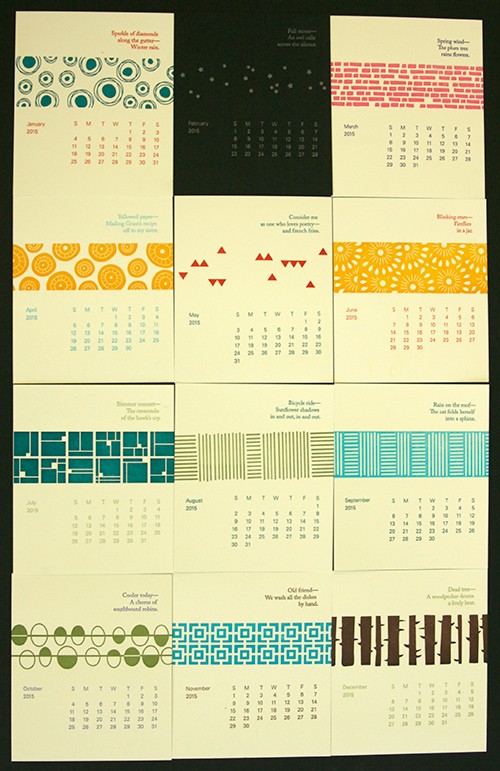
Since I wrote my last post about my process for making my collages, I’ve found several other blog posts detailing how someone made a book or piece of artwork. I especially like this one by Cassandra Fernández about her book “Among Humans.” Here are a few of her pictures, but do check out her blog post, where there are lots more details. See all her work here
The word for my prompt challenge group this month is “process.” It’s got so many possibilities I haven’t known where to start. But I noticed I’ve been paying more attention to how I, and the people around me, go about doing tasks. How I make dinner, how I organize my day, watching my husband repairing some trim in our kitchen…
![]() Recently I’ve been making collages that combine my haiku and my very large box of scrap paper. So I thought I’d photograph the process for a blog post.
Recently I’ve been making collages that combine my haiku and my very large box of scrap paper. So I thought I’d photograph the process for a blog post.
![]() First I selected 8 haiku to hand-set in my “house font” Bembo (the only one I have in metal). Then I letterpress printed them on my favorite paper, Hahnemühle Copperplate. Here’s the chase with the haiku all locked up and ready to print.
First I selected 8 haiku to hand-set in my “house font” Bembo (the only one I have in metal). Then I letterpress printed them on my favorite paper, Hahnemühle Copperplate. Here’s the chase with the haiku all locked up and ready to print.
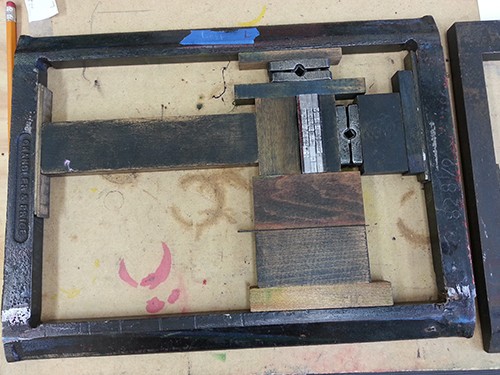
Next I made a debossed panel above each haiku, using the method here.The collages sit inside the panel. Copperplate is a soft mould-made paper that takes both letterpress and the panel-making technique very nicely.
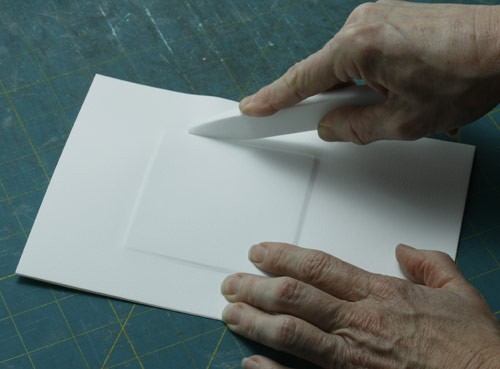
Before I got started, I dumped all the paper out of my scrap box and organized it by color and the stored the colors in separate large envelopes.
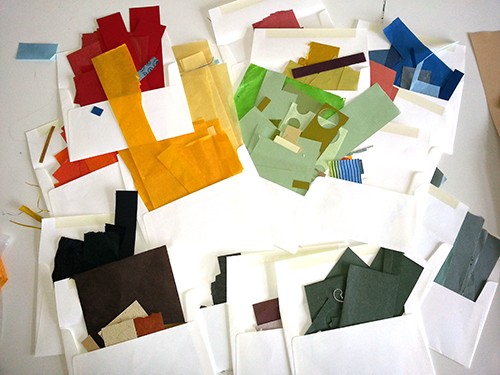
Then the fun begins—start cutting and combing the scraps . Most of the scraps are japanese moriki, but some are my own paste papers. Over the past month I’ve made a collage pretty much every day, usually first thing—it’s been a good way to ease into the day, thinking about color and shape combinations.
![]() Once I finish one, I hang it up on one of the long steel rods I’ve affixed to the wall, using magnets. Looking at them this way gives me ideas for future pieces.
Once I finish one, I hang it up on one of the long steel rods I’ve affixed to the wall, using magnets. Looking at them this way gives me ideas for future pieces.
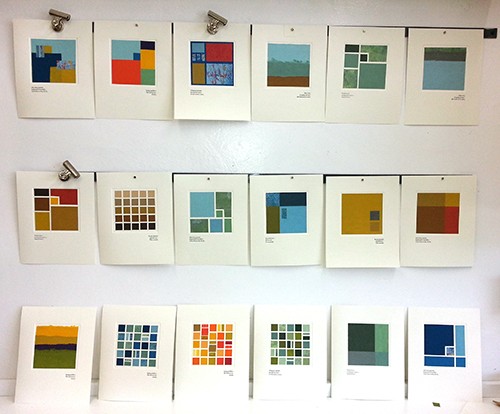
Here’s a closeup of one of them. To give you an idea of scale, the finished piece is 8×10 and the collage is 4-1/2×4-1/2 inches.
